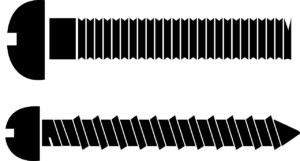Everything To Know About 4,4′-Bipyridyl

4,4′-Bipyridine (it is abbreviated to 4,4′-bipy or 4,4′-by) is a bipyridine which is essentially utilized as a precursor to N, N′-dimethyl-4,4′-bipyridinium [(C5H4NCH3)2]2+, identified as paraquat. This class is electroactive, and its toxicity awakes from the ability of this dictation to interrupt biological electron transfer.
Because of its composition, 4,4′-bipyridine can bridge between metal centers to provide coordination polymers. 4,4′-Bipyridine can also mediate electronic outcomes between two paramagnetic metal centers.
Crystallization from a suspension comprising gentisic acid and 4,4′-bipyridine yielded two types of glasses. They had the same overall structure of two gentisic acid particles per one 4,4′-bipyridine molecule.
In the first construction, the 4,4′-bipyridine is diprotonated and hydrogen bonded to two gentisinate anions via N-H⋯O1 hydrogen chains. In the following types of crystals, the 4,4′-bipyridine is also bonded to two gentisic acid molecules similarly as in the first, although there is a significant difference in dihedral angle between the planes of similar particles in the two structures. In further information, you can also know about 2-Chloro-4-methylpyridine.
Linked Pyridines
Bipyridines with the nitrogens placed at several positions on the rings, as in 3,3′-bipyridine, 4,4′-bipyridine, and 3,4′-bipyridine, have been studied as bridging ligands. 4,4′-Bipyridine can be integrated into a 78% yield from 4-bromopyridine managing NaH, Ni(O2CHCH3)2, NaOC(CH3)3, and PPh3 in (CH3OCH2)2 at 45 °C.
Purification is performed by chromatography on silica gel utilizing a 50/50 mixture of petroleum ether/diethyl ether as eluent.38 3,3′-Bipyridine has been used to bridge diindium, diruthenium, and heterobimetallic ruthenium–cobalt complexes.
4,4′-Bipyridine has been utilized to enhance the distance between metal centers in the bridged compound. X-ray crystal studies of a homobimetallic copper complex used as a bridging ligand show the complex to exist in a coplanar form, resulting in electronic interactions of the metals through the overlapping π-orbitals of the ligand with an 11.12 Å metal-metal distance.
Less electronic overlap is observed in a homobimetallic mixed-valence ruthenium system due to noncoplanarity of. Magnetic studies of dinuclear molybdenum complexes using 3,4′-bipyridine as the bridging ligand showed that the confirmation is substantially twisted compared to analogous 3,3′-bipyridine and 4,4′-bipyridine complexes.
Electron Transfer Systems in the Intermediate Administration
A large number of systems has been prepared in which the subscriber and acceptor are bridged by 4,4′-Bipyridyl and closely related ligands.115,117,244,245,288–290 The values for HDA determined for these systems are more comparable to those of the ion combinations listed in Table 2 than for the bb-bridged complexes.
However, the portion of delocalized electron density, αDA2, is meager, and most of these complexes fit into the weakly coupled border. eqns and can be used as approximations for the values of hνmax exacted in the limit that αDA2 approaches 0. Thus, for complexes of the type [{Ru(NH3)5}2B]5 +, plots of hνmax(D/A) versus (εmax Δεν max) extrapolate to hνmax(ref) = (13.0 ± 0.5) × 103 cm− 1 (Figure 14); various plots have r2 ≅ 0.8–0.9).
This is very similar to the value of χr = 13.4 × 103 cm− 1 calculated for the [Ru(NH3)6]3 +,2 + couple in Table 1 and a little larger than the value (12.1 × 103 cm− 1) estimated for [Ru(NH3)5py]3 +,2 +; however, the appropriate rate of DDA (eqn ) is probably larger for the 4,4′-by-bridged complex than the bimolecular effects.







